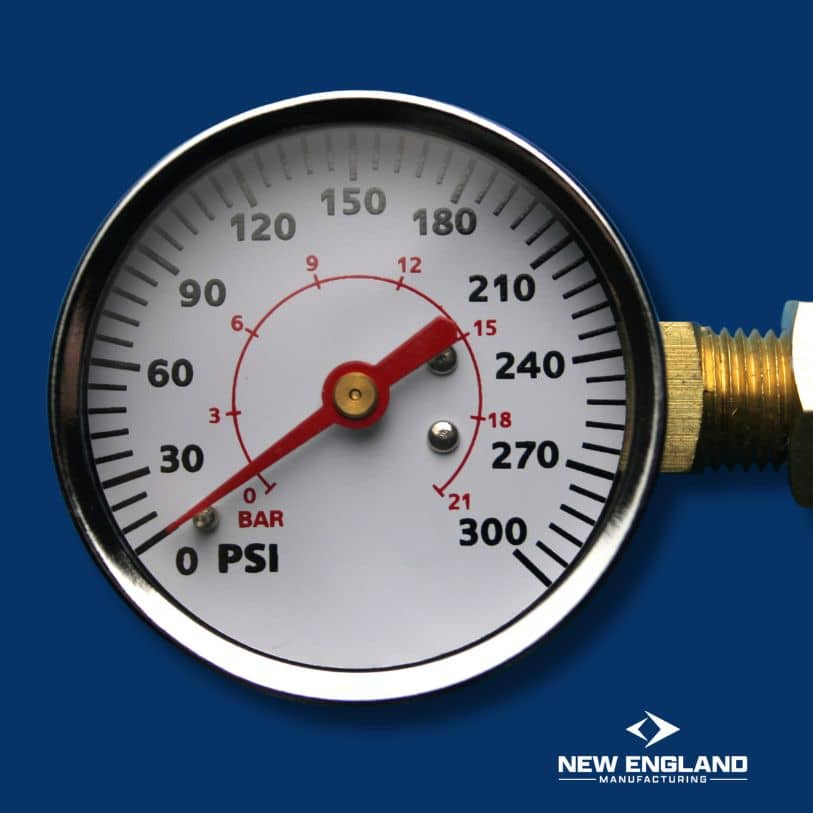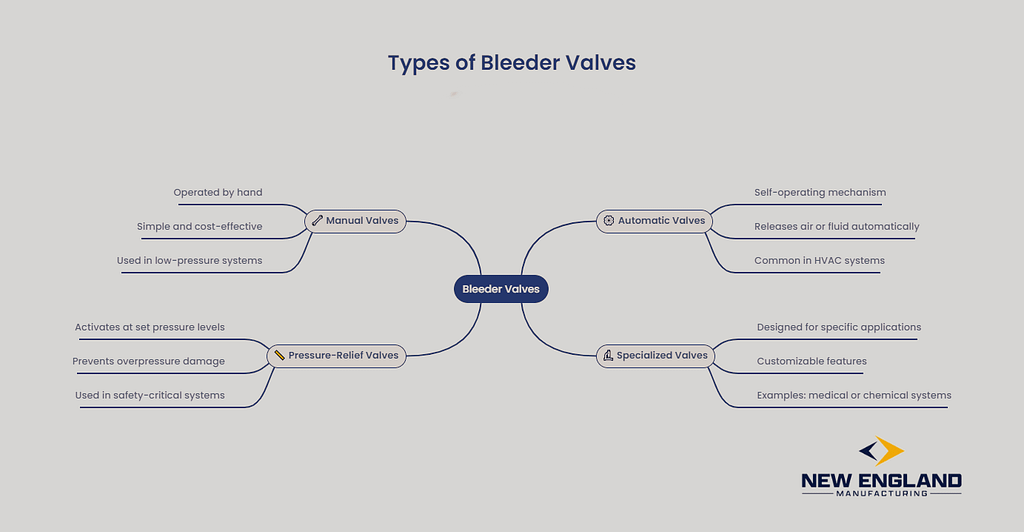What is a Bleeder Valve? A Comprehensive Guide for Beginners
Bleeder valves, though small and simple in design, play a critical role in various fluid systems, ensuring efficiency, safety, and functionality. Understanding what a bleeder valve is and how it works can save you time and resources while enhancing your system’s performance.
Quality water flow test equipment is manufactured and distributed to meet the highest standards, offering dependable performance for all types of systems.
In this comprehensive guide, we’ll explore the basics of bleeder valves, their functions, applications, and how to maintain them effectively. Let’s dive in!
What is a Bleeder Valve?
A bleeder valve is a small device used in fluid systems to release trapped air, gas, or excess pressure. It is typically installed in pipelines, radiators, or other fluid containers where the presence of air pockets or pressure buildup could hinder efficiency or pose safety risks.
Bleeder valves are often found in:
- Plumbing systems
- Heating, ventilation, and air conditioning (HVAC) systems
- Automotive braking systems
- Industrial machinery
By allowing air or gas to escape, a bleeder valve ensures the system operates smoothly without interruptions caused by trapped air or pressure imbalances, while fire pump packing plays a crucial role in maintaining proper sealing and preventing leaks in fire pump systems.
How Does a Bleeder Valve Work?
| Step | Description |
| Detection | Trapped air or pressure is identified by reduced performance or unusual noise. |
| Opening the Valve | The valve is manually opened using a tool or by turning it directly. |
| Release of Air/Gas | Air or gas escapes, often accompanied by a hissing or bubbling sound. |
| Closing the Valve | The valve is sealed once the air or gas has been fully expelled. |
Bleeder valves function by providing a controlled outlet for excess air, gas, or liquid. When opened, the valve releases the trapped substance, restoring balance to the system. Here’s a step-by-step breakdown of its operation:
- Detection of Trapped Air or Pressure: Systems with trapped air may experience reduced performance, uneven operation, or noise. Pressure buildup can lead to leaks or damage.
- Opening the Valve: A user manually opens the bleeder valve using a tool or by turning it directly.
- Release of Air/Gas: The trapped air or gas escapes through the valve, often accompanied by a hiss or bubbling sound.
- Closure of the Valve: Once the air or gas is expelled, the valve is closed to restore the system’s seal.
Example: Bleeder Valves in Radiators
In a radiator, air pockets can prevent hot water from circulating properly, leading to cold spots. Opening the radiator’s bleeder valve allows the air to escape, restoring efficient heat distribution.
Types of Bleeder Valves
Bleeder valves come in various types, each suited for specific systems and applications. Let’s explore the most common ones:
1. Manual Bleeder Valves
- Operated by hand, requiring a tool (e.g., screwdriver) or manual turning.
- Common in radiators and plumbing systems.
- Advantages: Simple and cost-effective.
2. Automatic Bleeder Valves
- Self-activating, releasing trapped air without manual intervention.
- Frequently used in HVAC systems.
- Advantages: Convenient and time-saving.
3. Pressure-Relief Bleeder Valves
- Designed to release excess pressure in industrial or automotive systems.
- Often equipped with safety mechanisms to prevent overpressure damage.
- Advantages: Essential for high-pressure systems.
4. Specialized Bleeder Valves
- Custom-designed for unique applications, such as chemical processing or high-temperature environments.
- Advantages: Tailored to specific needs.
Key Applications of Bleeder Valves
Bleeder valves are integral to several industries and systems. Here’s an overview of their primary applications:
| Application | Details |
| Plumbing Systems | Release air from water pipelines to maintain consistent flow and pressure. |
| HVAC Systems | Remove trapped air in radiators, boilers, and cooling systems to ensure optimal performance. |
| Automotive Industry | Expel air from brake lines during maintenance, ensuring effective braking. |
| Industrial Machinery | Prevent pressure buildup in hydraulic systems or pipelines, safeguarding equipment and personnel. |
| Water Heaters/Boilers | Maintain efficiency by expelling air pockets that hinder proper operation. |
Bleeder valves are integral to several industries and systems. Here are some of their most common uses:
1. Plumbing Systems
- Release air from water pipelines to maintain consistent flow and pressure.
2. HVAC Systems
- Ensure optimal performance by removing trapped air in radiators, boilers, and cooling systems.
3. Automotive Industry
- Remove air from brake lines during maintenance or after repairs to ensure effective braking.
4. Industrial Machinery
- Prevent pressure buildup in hydraulic systems or pipelines, safeguarding equipment and personnel.
5. Water Heaters and Boilers
- Bleeder valves in these systems help maintain efficiency by expelling air pockets.
Benefits of Using a Bleeder Valve
Using bleeder valves offers numerous advantages, including:
- Enhanced System Efficiency: Eliminates air pockets, ensuring smooth operation.
- Increased Safety: Reduces the risk of overpressure and system failure.
- Longevity: Prevents damage caused by trapped air or pressure buildup.
- Ease of Maintenance: Simplifies troubleshooting and repairs.
How to Maintain a Bleeder Valve
Proper maintenance is crucial to ensure a bleeder valve’s longevity and functionality. Follow these tips:
1. Regular Inspections
- Check for signs of wear, corrosion, or blockages.
- Inspect seals and gaskets for leaks.
2. Clean the Valve
- Remove debris or sediment that may obstruct the valve’s operation.
- Use appropriate cleaning solutions for the valve material.
3. Test the Valve
- Open and close the valve periodically to ensure smooth operation.
- Check for any unusual noises or resistance.
4. Replace When Necessary
- Replace damaged or outdated valves promptly to avoid system issues.
Common Issues with Bleeder Valves (and How to Fix Them)
Bleeder valves are essential components in maintaining smooth operation in fluid systems by allowing trapped air or gas to escape. However, like any mechanical part, bleeder valves can face issues over time. Understanding the common problems and their solutions can ensure that your system remains efficient and safe. Below are some typical issues with bleeder valves and how to fix them, with a special note on fire hydrant inspection.
1. Leaks Around the Valve
Issue: Over time, the sealing mechanism of a bleeder valve may wear down, causing leaks. This is particularly problematic because even a small leak can affect the system’s pressure and performance.
Solution: To fix leaks, inspect the valve for damage or wear on the packing material or gasket. Replacing the packing or gasket is often the most effective solution. If the valve body is cracked or severely worn, it may need to be replaced entirely. Regular fire hydrant inspections also ensure that bleeder valves used in hydrants are properly sealed, preventing potential leaks that could affect emergency response times.
2. Difficulty Opening or Closing the Valve
Issue: A bleeder valve may become difficult to open or close due to dirt, corrosion, or mechanical wear. This is especially problematic in systems where frequent adjustments are necessary.
Solution: First, clean the valve and surrounding area to remove any debris or buildup. If the valve is still difficult to operate, check for signs of corrosion or damage. In many cases, lubricating the valve with an appropriate lubricant can restore smooth operation. For fire hydrant inspection, it’s crucial to ensure that the bleeder valve operates easily, as a stuck valve can delay necessary maintenance during an emergency.
3. Clogging or Blockage
Issue: Over time, dirt, debris, or mineral buildup can clog the valve, preventing air or gas from escaping as intended. This can lead to pressure imbalances, inefficiencies, or even system damage.
Solution: Disassemble and thoroughly clean the valve to remove any buildup. Using a mild cleaning solution can help dissolve mineral deposits without damaging the valve. During fire hydrant inspection, checking for debris or blockages in the bleeder valve is essential to maintain the proper flow of water during an emergency.
4. Failure to Release Air or Gas
Issue: A bleeder valve may fail to release air or gas if the internal mechanism becomes damaged or the valve is not properly seated. This can lead to trapped air, causing irregular system performance.
Solution: Inspect the internal mechanism of the valve for any signs of wear or damage. Replacing any faulty components will restore the valve’s function. Additionally, during fire hydrant inspection, ensure the bleeder valve is properly seated and functioning to allow air to escape, preventing air pockets that could compromise fire hydrant pressure during use.
5. Corrosion and Rust
Issue: Corrosion and rust are common issues, especially in systems exposed to moisture or harsh conditions. This can weaken the valve and prevent it from functioning correctly.
Solution: Regularly inspect and maintain the bleeder valve to prevent corrosion. If corrosion is already present, clean the valve and treat it with anti-corrosion spray or replace it if the damage is severe. In fire hydrant inspections, it’s essential to look for signs of rust or corrosion, as they can affect both the bleeder valve and the overall hydrant performance.
6. Incorrect Valve Installation
Issue: If a bleeder valve is improperly installed, it may not function as intended. This can lead to issues such as leaks, difficulty operating the valve, or failure to release air.
Solution: Ensure that the bleeder valve is installed according to the manufacturer’s instructions, and that all connections are secure. Regular fire hydrant inspections should include checking the installation of bleeder valves to ensure they are correctly positioned for optimal performance during emergencies.
Choosing the Right Bleeder Valve for Your Needs
When selecting a bleeder valve, consider the following factors:
- System Type: Ensure compatibility with the specific fluid or gas system.
- Material: Choose a valve material that can withstand the system’s operating conditions (e.g., temperature, pressure, and corrosion).
- Size: Select the appropriate valve size for efficient operation.
- Type: Decide between manual, automatic, or specialized valves based on your system’s needs.
The Final Thought:
A bleeder valve plays a critical role in maintaining the proper functioning of fluid systems by allowing excess air or gas to escape. This simple yet vital component ensures system efficiency, reduces the risk of damage, and extends the lifespan of machinery.
When it comes to sourcing high-quality bleeder valves and related products, New England Manufacturing is your trusted partner. With a commitment to precision, durability, and customer satisfaction, we offer top-tier solutions tailored to your specific needs.
Our products are designed to withstand the toughest conditions, ensuring reliability and peace of mind. Choose New England Manufacturing for all your fluid control needs, and experience the difference in quality and service.
Contact us today for expert advice and top-quality solutions!

Mark R.
With a strong foundation in industrial safety and fire protection systems, Mark R. specializes in creating clear, technical, and compliance-driven content. Writing for SafeTech Reports, he covers topics such as fire hydrant testing, PPE protocols, emergency procedures, and smart technology integration in safety systems. His work ensures that professionals stay informed on the latest regulations, best practices, and emerging trends in safety and infrastructure maintenance.
Get in touch
We usually respond within 24 hours
Need Reliable Water Flow Test Equipment?
For over 70 years, New England Manufacturing has been the trusted source for fire hydrant and water flow testing kits. From pitot gauge kits to custom test kits, we provide precision, durability, and expert calibration to meet your needs.
- Custom-built test kits
- High-quality pressure gauges
- Reliable calibration services



